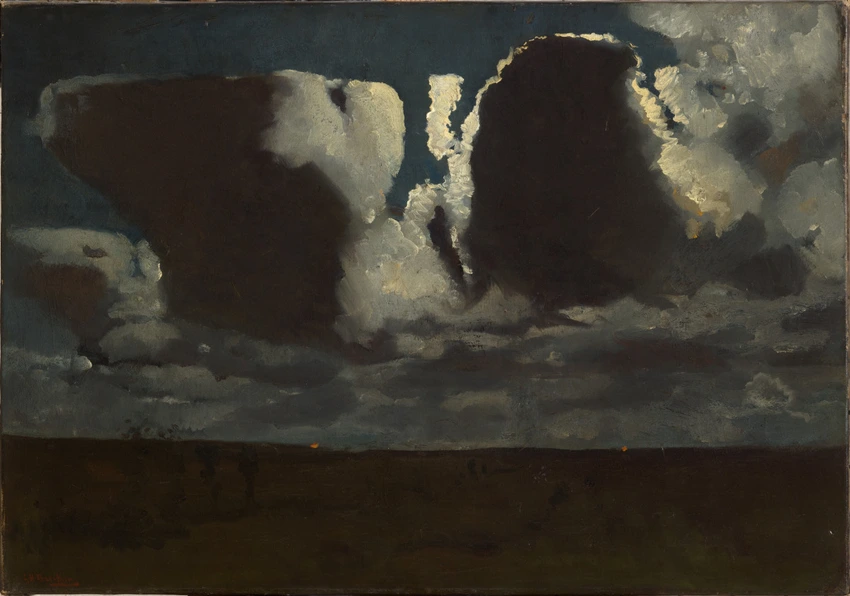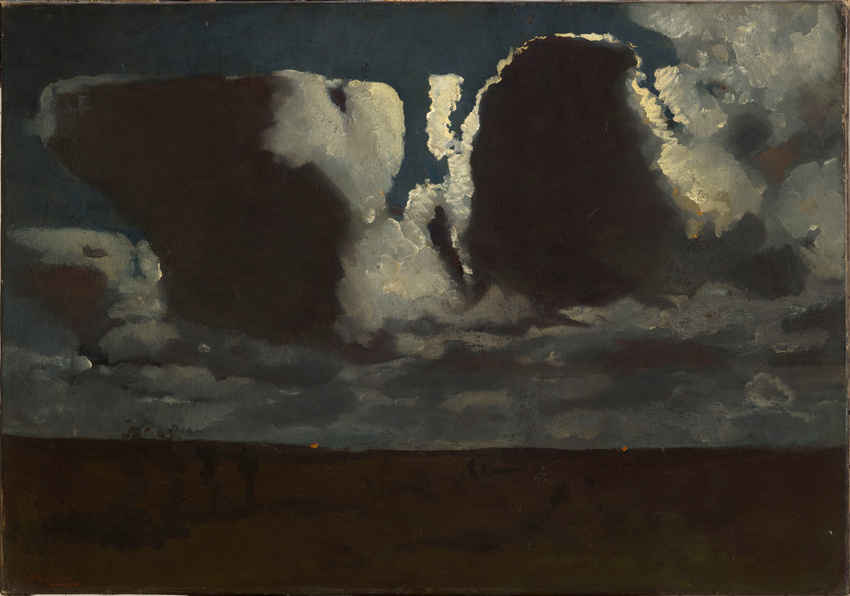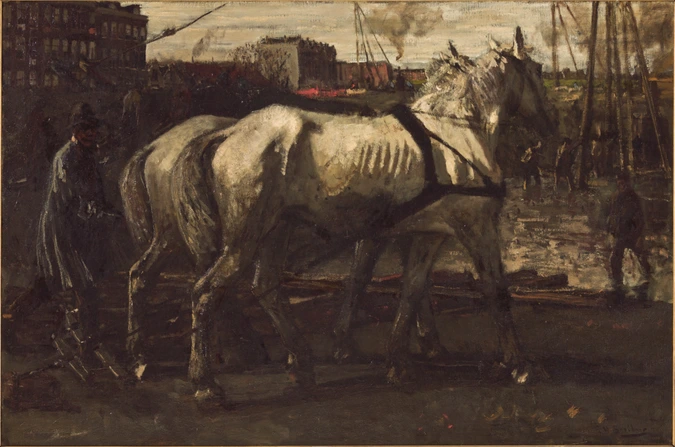Clair de lune
The painter George Hendrik Breitner was born in Rotterdam in 1857, but received most of his training in Amsterdam where, about 1880, he was a pupil of Willem Maris, one of the principal members of the naturalist movement known as The Hague School. Under Maris' influence, he moved away from his earlier academic training and produced sober, vigorously brushed street scenes of Amsterdam. In 1886 he was appointed to a teaching post at the Amsterdam Academy.
About 1887-1889, he painted this astonishing, groundbreaking Moonlight with its strange light effects. The strip of dark brown in the foreground, on which the silhouettes of a few tree trunks can be made out, is punctuated by two tiny orange dots, probably lights in the distance, which are enough to give an impression of depth. Above an intermediate area of clouds which seemed to be teased out by the wind, he has painted two huge back-lit cloud masses. Indeed the moon, which is hidden on the right of the painting, is betrayed by the fine white border outlining the cloud on the right and modelling the cloud on the left, both vague compact masses that pick up the tonality of the lower part of the painting.
This originality in both the composition and the colour scheme influenced later generations. It impressed Vincent van Gogh and was later a revelation for Piet Mondrian in his experiments with abstraction.



